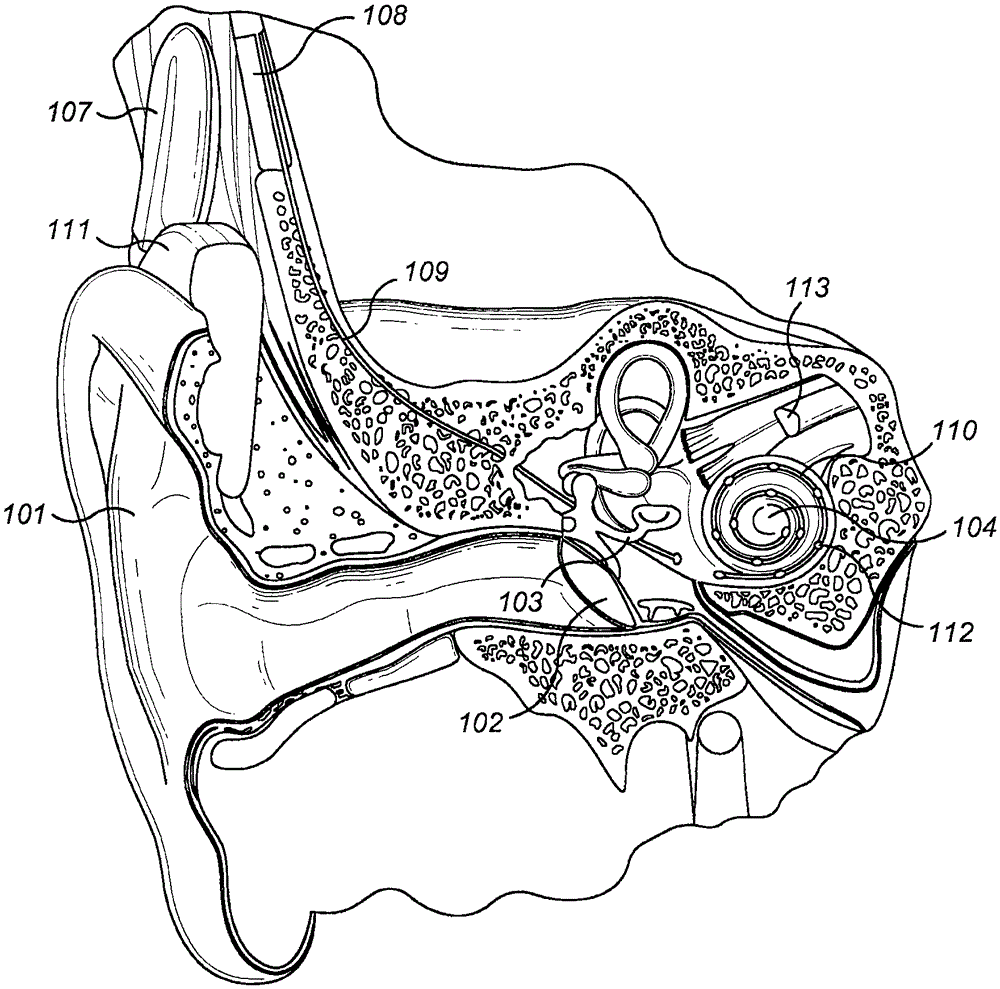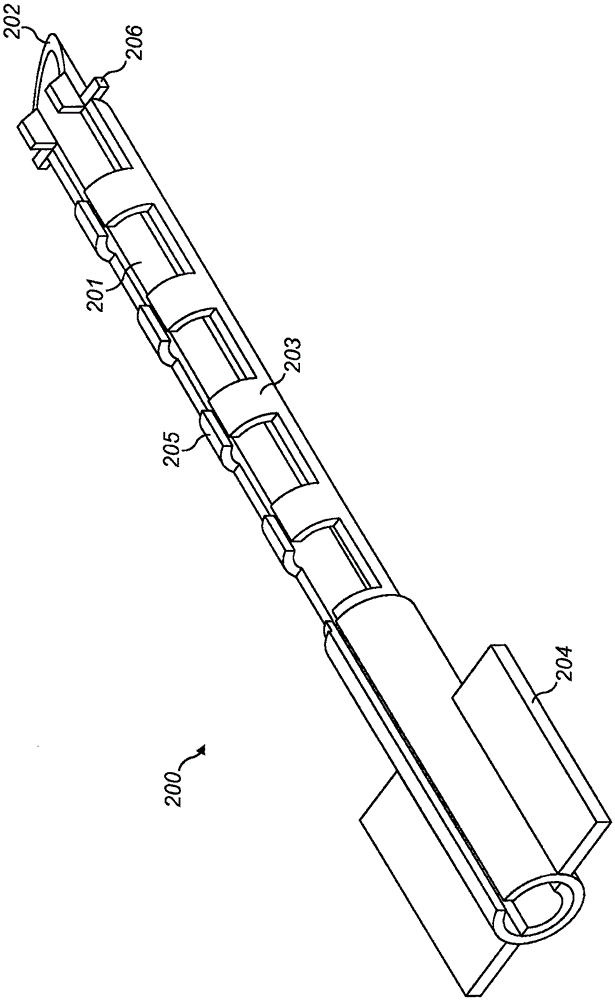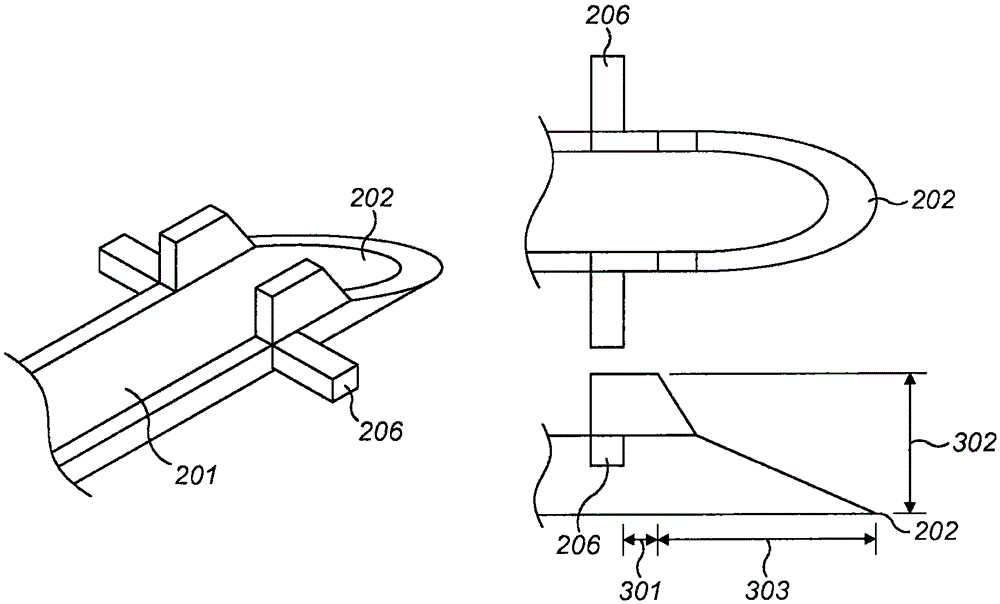Auditory prosthesis stimulation rate as a multiple of intrinsic oscillation
A technology for supporting equipment and implanting electrodes, applied in the direction of electrodes, internal electrodes, head electrodes, etc., which can solve the problems of polluting the inside of the cochlea 104, time-consuming, etc.
- Summary
- Abstract
- Description
- Claims
- Application Information
AI Technical Summary
Problems solved by technology
Method used
Image
Examples
Embodiment Construction
[0023] Embodiments of the invention are based on the use of an electrode insertion support device that facilitates consistent incision of the electrode opening (e.g., within the round window membrane) and a uniform electrode that avoids the electrode array from contacting and becoming contaminated by surrounding tissue Insertion process.
[0024] figure 2 Shown is an electrode insertion support device 200 comprising a rigid electrode holder 201 made of any structurally suitable biocompatible material, such as metal or hard plastic, which encloses at least a portion of the cochlear implant electrodes while allowing them to be inserted into the cochlear implant. The surrounding electrodes slide freely within it. The electrode holder 201 may include an inner surface 207 coated with a friction-reducing material that facilitates free sliding of the enclosed portion of the cochlear implant electrode; for example a highly hydrophilic material such as hydrogel. Additionally or alte...
PUM
 Login to View More
Login to View More Abstract
Description
Claims
Application Information
 Login to View More
Login to View More - R&D Engineer
- R&D Manager
- IP Professional
- Industry Leading Data Capabilities
- Powerful AI technology
- Patent DNA Extraction
Browse by: Latest US Patents, China's latest patents, Technical Efficacy Thesaurus, Application Domain, Technology Topic, Popular Technical Reports.
© 2024 PatSnap. All rights reserved.Legal|Privacy policy|Modern Slavery Act Transparency Statement|Sitemap|About US| Contact US: help@patsnap.com










